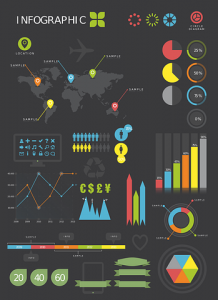We now consider how we can tune the website to improve the performance of this site using Search Engine Optimisation (SEO). Optimising for performance provides a better user experience and attracts more traffic. Performance can be measured in several ways, including the searchability improvements, local search improvements, analytical improvements and technical improvements.
Congratulations on building your “local” website.
Increasing Searchability Organically
Now that your website is in place, you now need to consider how you can better optimise your website to improve searchability. Optimising your website is like tuning your violin. When it is tuned, your instrument can sound pleasant to the air. It is the same when your website is optimised it can improve its search listing ranking.
This optimisation via search capability is termed Search Engine Optimisation (SEO). According to MOZ, the definition of SEO is “is the practice of increasing the quantity and quality of traffic to your website through organic search engine results”. What is good is that this function is free to use!
Why Optimise your Website?
 Optimising your website allows the best viewer traffic possible and ultimately a higher ranking on the search screens – Search Engine Results Pages (SERP). This ranking allows for your message to be shared to more readers allowing your ideas to be sold.
Optimising your website allows the best viewer traffic possible and ultimately a higher ranking on the search screens – Search Engine Results Pages (SERP). This ranking allows for your message to be shared to more readers allowing your ideas to be sold.
There are two search types. There is a ‘free’ organic search which is free to use, or there is the paid-for search or Search Engine Marketing (SEM) which is a service that Google charges the user which can achieve instant additional traffic.
There may be reasons why you may want either type or even both search types SEO and SEM on your website together. We will discuss this in a future article but suffice it to say that using both SEO and SEM together can further enhance your search ranking to potential viewers.
We can help you to improve your marketing effectiveness by improving your searchability using organic and paid for keywords.
Contact Us to better understand your search options
Increasing rankings locally
Focus on a local region is an important aspect to help promote your business. Whether you are mentioning Mosman, North Sydney or any other locality in-between or beyond, the focus on searches in local companies is a particular favourite strategy for Google to help local businesses compete with the bigger end of town. There are special features within Google’s search function that favours local search.
Having a good local search setup is an aspect of optimising your website to increase the searchability rankings.
What is Google My Business?
The set of unique features that help local businesses search is called Google My Business, and it is a free service that Google has offered local businesses to stand out from the corporate world. Optimising the Google My Business features offers additional local search markers, which enhances your domains searchability overall.
Feel free to ask me about how you can take advantage of Google My Business in your local business.
Contact Us to optimise your Google My Business listing
Increasing performance technically via Google Analytics or other metrics
When monitoring the performance of your website, there are several key metrics that you want to review:

1. Unique visitors: The best indication of your site’s overall traffic, unique visitors refers to the number of individuals who visit your website during a given period. This volume generated varies dramatically the level and quality of content you publish.
2. Pageviews: The cumulative number of individual pages that your visitors click on during a given period. If your page views are higher than your unique visitors, that may be an indication that your audience is finding your content engaging because individuals are clicking around to multiple pages.
3. Search engine traffic: The amount of traffic that search engines, such as Google or Bing, monitor. This number gives you a clear indication of how effective you are optimising your content for search.
4. Bounce rate: The percentage of visitors who come to your site and then immediately “bounce” or leave before clicking on any other pages. A bounce rate of less than 40 per cent is considered excellent. If it is any higher, it may be an indication that visitors to your site don’t like what they find there.
 5. Conversion rate: The percentage of visitors to your site who take a specific action that your content encourages them to, such as signing up for your newsletter. Conversion rates vary considerably based on the industry but tend to hover around 2 and 3 per cent on average. That said, aim for a conversion rate of approximately 5 per cent, or even higher if you are creating specific landing pages for particular audiences.
5. Conversion rate: The percentage of visitors to your site who take a specific action that your content encourages them to, such as signing up for your newsletter. Conversion rates vary considerably based on the industry but tend to hover around 2 and 3 per cent on average. That said, aim for a conversion rate of approximately 5 per cent, or even higher if you are creating specific landing pages for particular audiences.
6. Inbound links: The number of external links to your site, an indication that other people have found your content valuable enough to link to it. Importantly, the more high-quality inbound links you have, the higher your content ranks on search engines.
Contact our friendly team to arrange an initial consultation
